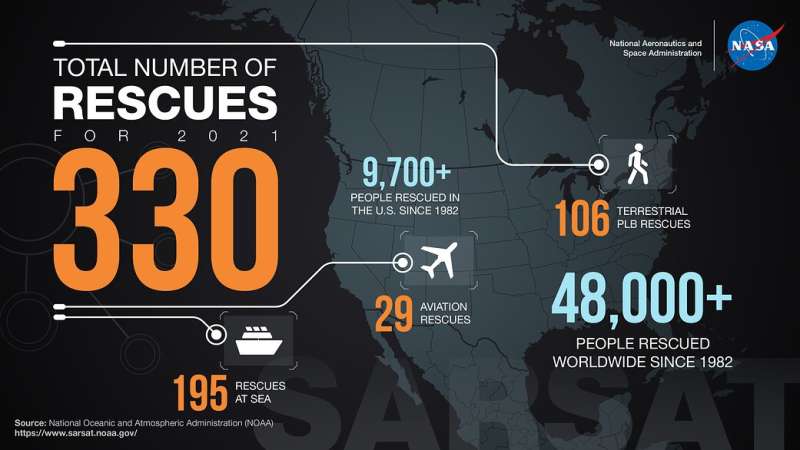Credit: NOAA
In 2021, NASA technology saved 330 lives in the U.S. network region of the international satellite-aided search and rescue effort, Cospas-Sarsat. NASA has lent technical expertise to the Cospas-Sarsat program since its founding, aiding in the rescue of over 48,000 individuals globally.
Users purchasing commercially available 406 MHz frequency Cospas-Sarsat beacons have free access to the network, which provides accurate and reliable emergency location services. When users activate these beacons, they send signals through satellite instruments to ground stations that can calculate their position. The network then alerts first responders to the location and nature of the emergency.
Beacons are available in three types: Personal Locator Beacons (PLBs), for use by hikers and other explorers; Emergency Position Indicating Radio Beacons (EPIRBs), designed for maritime use; and Emergency Locator Transmitters (ELTs) for aviation. In 2021, 106 rescues were PLBs, 195 were EPIRBS, and 29 were ELTs.
In recent years, NASA's Search and Rescue (SAR) office has helped Cospas-Sarsat to enhance its network with aviation studies, next-generation beacon technology, and new capabilities for Artemis astronauts. The office is also working on a lunar search and rescue concept, or LunaSAR, as part of NASA's lunar network development effort, LunaNet.
Provided by NASA's Goddard Space Flight Center























